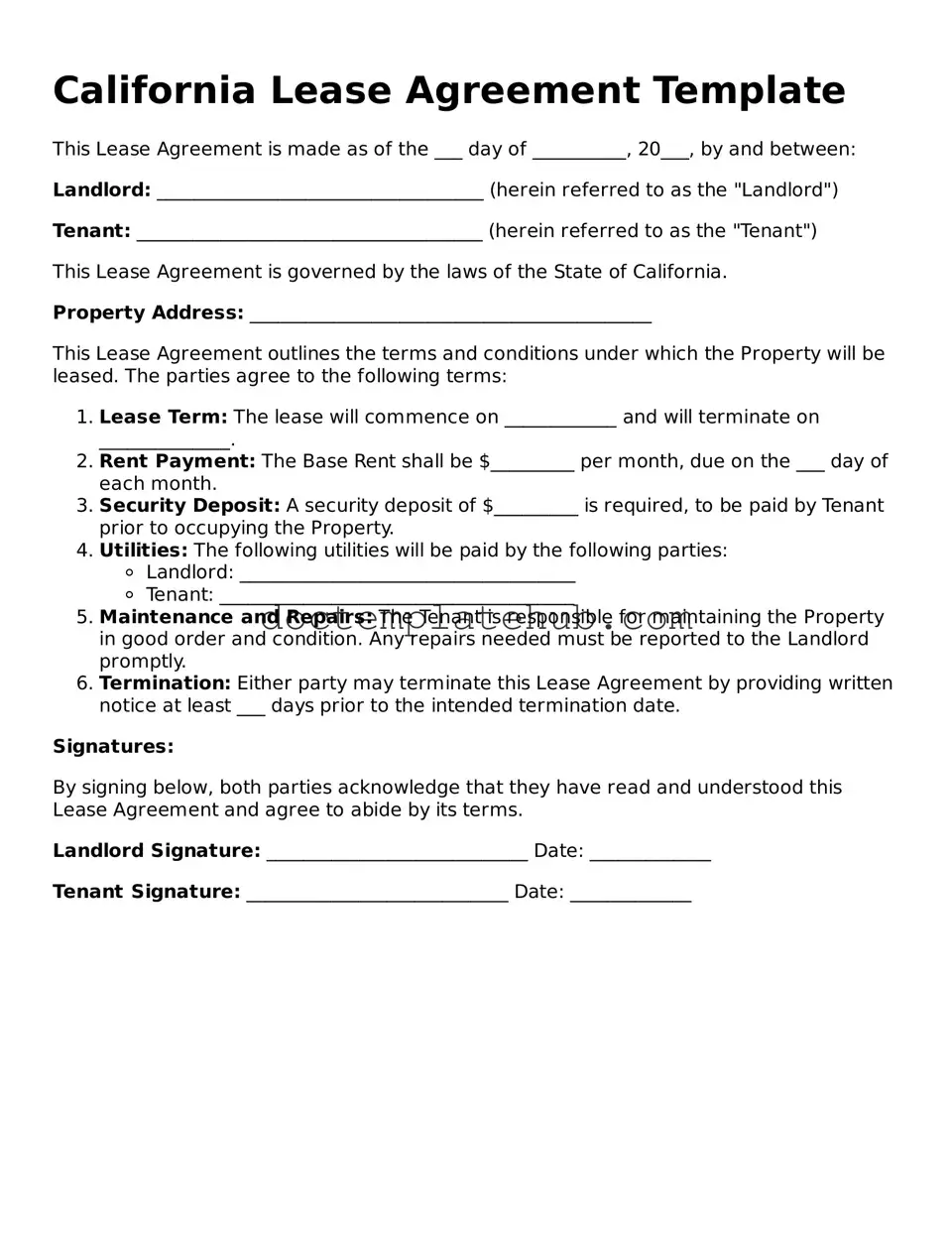What is a California Lease Agreement?
A California Lease Agreement is a legally binding document that outlines the terms and conditions under which a landlord rents property to a tenant in the state of California. This agreement typically includes details such as the rental amount, duration of the lease, security deposit requirements, and responsibilities of both parties.
What are the key components of a California Lease Agreement?
Key components of a California Lease Agreement include the names of the landlord and tenant, property address, lease term (fixed or month-to-month), rent amount and payment schedule, security deposit details, maintenance responsibilities, and rules regarding pets or smoking. Additionally, the agreement should cover procedures for lease termination and renewal.
Is a written lease agreement required in California?
While California law does not mandate a written lease for rental agreements shorter than one year, having a written document is highly recommended. A written lease provides clarity, protects both parties, and serves as a reference in case disputes arise. For leases longer than one year, a written agreement is legally required.
How much notice must a landlord give to terminate a lease?
The notice period a landlord must provide to terminate a lease depends on the duration of the tenancy. For month-to-month leases, a landlord must give at least 30 days' notice. If the tenant has lived in the unit for more than one year, the notice period increases to 60 days. Fixed-term leases typically end automatically at the end of the lease term unless otherwise agreed upon.
Can a landlord increase rent during a lease?
Generally, a landlord cannot increase rent during the term of a fixed lease unless the lease specifically allows for it. For month-to-month agreements, landlords can raise rent but must provide proper notice, typically 30 days for increases under 10% and 60 days for larger increases. Rent control laws may also apply in certain California cities, affecting how and when rent can be increased.
What happens if a tenant fails to pay rent?
If a tenant fails to pay rent, the landlord has the right to initiate eviction proceedings. Before taking legal action, the landlord must typically provide a notice to pay rent or quit, giving the tenant a chance to pay the overdue amount. If the tenant does not comply, the landlord may file an unlawful detainer lawsuit to regain possession of the property.
Are there specific disclosures required in a California Lease Agreement?
Yes, California law requires landlords to provide certain disclosures in lease agreements. These may include information about lead-based paint for properties built before 1978, mold, bed bug infestations, and the presence of any known hazards. Additionally, landlords must disclose whether the property is located in a flood zone or if there are any pending legal actions affecting the property.
Can tenants make changes to the rental property?
Tenants generally cannot make significant changes or alterations to the rental property without the landlord's consent. This includes painting walls, installing fixtures, or making structural changes. Minor adjustments, such as hanging pictures, are usually acceptable. Any changes made without permission could result in deductions from the security deposit or other penalties.
What should I do if I have a dispute with my landlord?
If a dispute arises with a landlord, tenants should first attempt to resolve the issue through open communication. Documenting all interactions and keeping records of any agreements is essential. If direct communication fails, tenants may seek mediation services or legal assistance. In some cases, filing a complaint with local housing authorities or pursuing legal action may be necessary.
